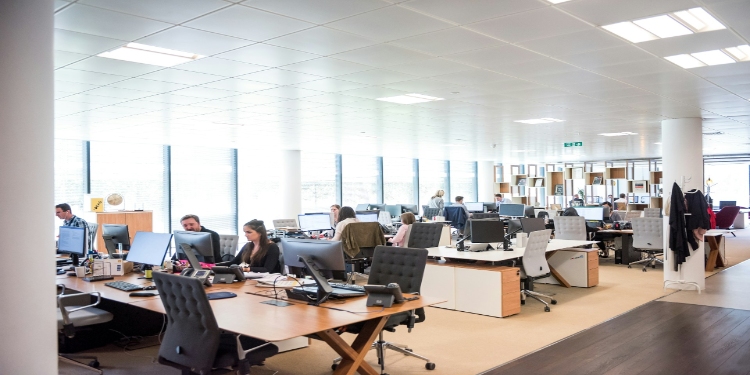Collaboration has become one of the most critical drivers of success in modern businesses. A workplace that encourages teamwork fosters creativity, accelerates problem-solving, and improves overall productivity. Building an environment that promotes collaboration does not happen by chance. It requires thoughtful design, the right technology, and a culture that values open communication.
Below are strategies and considerations for creating workspaces that enable employees to connect, share ideas, and work together effectively.
Why Collaborative Workspaces Matter
Organisations thrive when employees share knowledge and leverage each other’s strengths. A collaborative workplace improves employee engagement and enhances innovation. When individuals work together, they are more likely to identify solutions quickly and develop creative approaches to challenges.
Collaboration also strengthens relationships among team members, leading to improved morale and reduced turnover. Employees who feel connected to their colleagues are more likely to remain motivated and make meaningful contributions to the company’s goals.
Designing the Physical Space for Collaboration
The design of an office has a significant impact on how employees interact. Open spaces, breakout areas, and shared workstations are standard features of collaborative environments. These elements remove physical barriers, making it easier for individuals to communicate and work together.
However, an open-plan office alone is not enough. Effective collaborative spaces require balance. Employees also need quiet areas where they can concentrate without distractions. A well-designed office includes a mix of spaces, such as:
- Open collaborative zones for group discussions and brainstorming sessions.
- Private rooms or pods for focused work and confidential conversations.
- Casual areas, such as lounges and café-style seating, for informal interactions.
Investing in an office fit out in Birmingham can help businesses create an environment tailored to their specific needs, blending functionality with aesthetics.
Technology as a Collaboration Enabler
Modern workplaces rely heavily on technology to facilitate collaboration. From video conferencing tools to project management software, the right technology enables teams to communicate and collaborate effectively, regardless of location.
Key technologies that support collaboration include:
- Cloud-based platforms that allow file sharing and real-time updates.
- For video conferencing tools, seamless communication with remote team members is essential.
- Digital whiteboards and interactive displays make brainstorming sessions more engaging and effective.
Companies should regularly evaluate their technology to ensure it meets the evolving needs of the workforce. Providing employees with intuitive and reliable tools minimises frustration and maximises productivity.
Encouraging a Collaborative Culture
A collaborative environment is not just about physical spaces or technology; it’s also about the people who work within it. The culture of a company plays a crucial role in its success. Leaders must actively promote teamwork and create an atmosphere where employees feel comfortable sharing ideas without fear of judgment.
Strategies to foster a collaborative culture include:
- Recognising and rewarding team achievements to reinforce the value of working together.
- Encouraging cross-departmental projects to break down silos.
- Providing training and development programs focused on communication and teamwork skills.
Managers should lead by example by collaborating with colleagues and demonstrating openness to feedback and ideas.
The Role of Flexibility in Collaboration
Flexibility in the workplace enhances collaboration by accommodating different working styles. Some employees thrive in structured environments, while others prefer informal settings. Offering a range of spaces and allowing employees to choose where they work empowers them to collaborate more effectively.
Flexible scheduling also supports collaboration, particularly in organisations with hybrid or remote teams. When employees can adjust their schedules to align with their teammates, they can participate in meetings and group activities without compromising productivity.
Measuring the Impact of Collaborative Workspaces
Businesses that invest in collaborative environments should measure their impact to ensure that these efforts deliver results. Metrics such as employee satisfaction, productivity levels, and innovation rates offer valuable insights into the effectiveness of these approaches. Surveys and feedback sessions can help identify areas for improvement and ensure that the office continues to support collaboration.
Observing how employees use different spaces can also reveal whether the design meets their needs or whether adjustments are needed. If collaborative areas remain empty, it may indicate a need for adjustments in layout or furniture.
Final Thoughts
Creating an environment that encourages collaboration requires more than rearranging desks. It involves a comprehensive approach that encompasses thoughtful office design, advanced technology, and a supportive work environment. When employees have spaces that inspire interaction, tools that simplify communication, and a culture that values teamwork, collaboration becomes a natural part of daily operations.
Businesses that prioritise collaboration among their employees position themselves for greater innovation, stronger employee relationships, and long-term success in an increasingly competitive marketplace.
David Prior
David Prior is the editor of Today News, responsible for the overall editorial strategy. He is an NCTJ-qualified journalist with over 20 years’ experience, and is also editor of the award-winning hyperlocal news title Altrincham Today. His LinkedIn profile is here.











































































